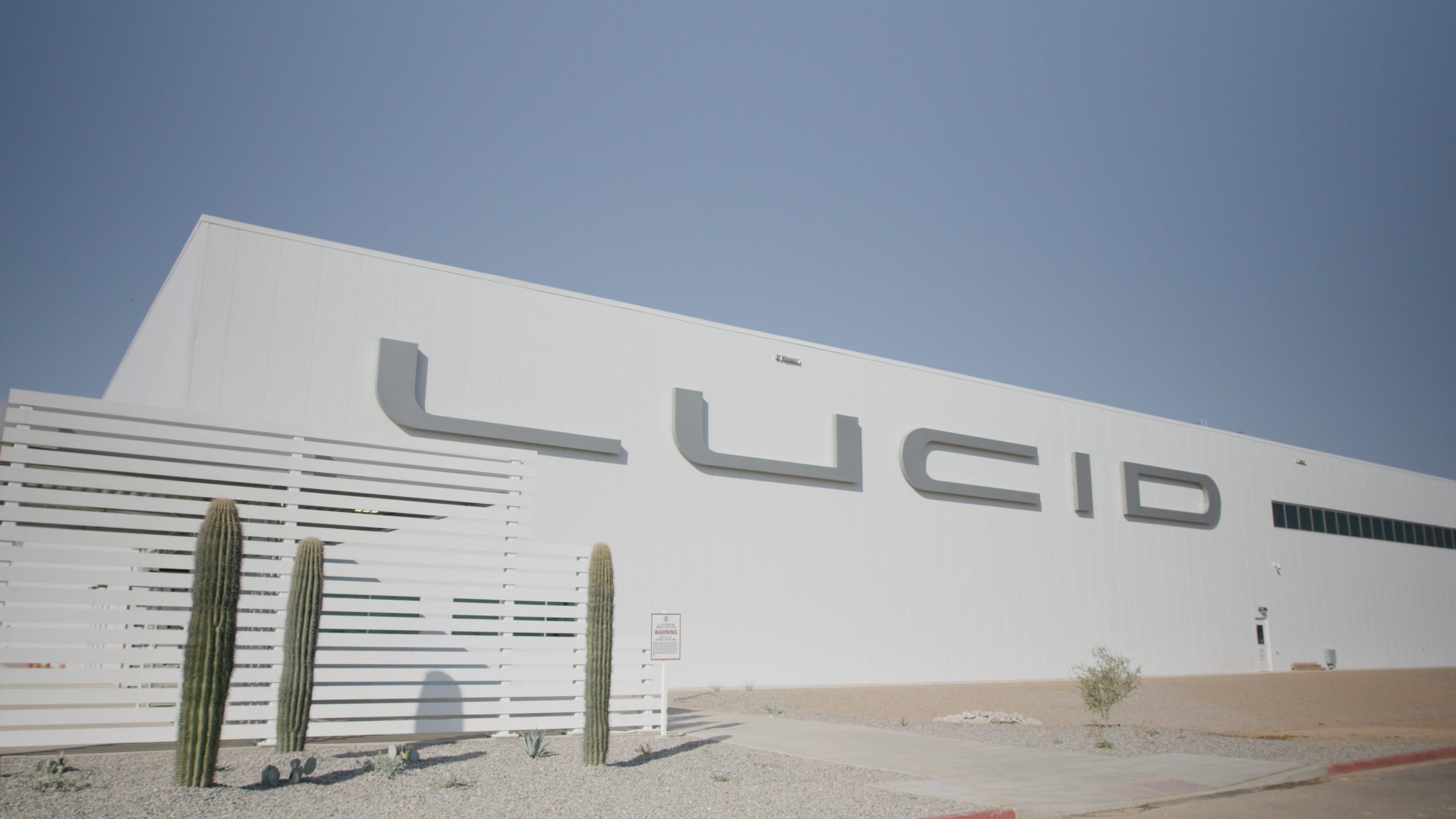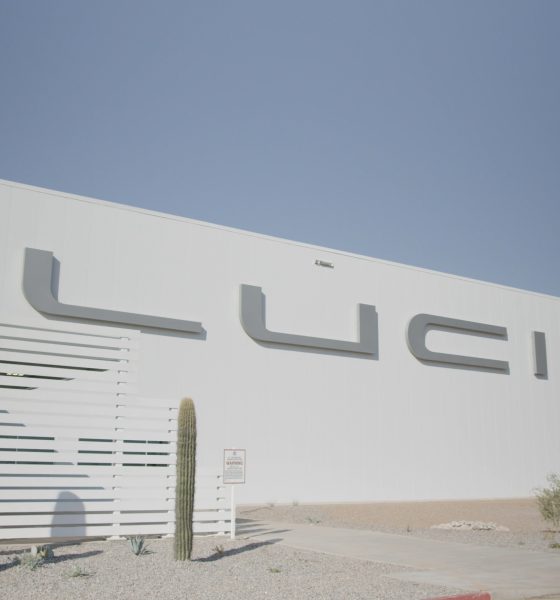Lucid Motors has joined several automakers in adopting Tesla’s North American Charging Standard (NACS), just months after its CEO said it wouldn’t switch unless higher-voltage charging architecture was unveiled. Following Lucid’s announcement of plans to adopt the standard this week, Tesla CEO Elon Musk pointed out that the switch was probably a little difficult for Lucid’s CEO to accept after some of his past statements.
On Tuesday, Lucid announced it would be adopting Tesla’s NACS, giving its drivers access to the Supercharger network as soon as 2025. Like other automakers, the company will build Tesla’s charging port into its electric vehicles (EVs) starting in 2025, and it plans to offer adapters to those with the current Combined Charging System (CCS) hardware in the same year — both of which will enable its cars to charge at Tesla’s Superchargers.
Following the announcement, Musk commented on X that the adoption of Tesla’s standard “must have been a bitter pill to swallow,” especially after the automaker’s CEO recently suggested that the charging port didn’t matter.
That must have been a bitter pill to swallow 😂
— Elon Musk (@elonmusk) November 6, 2023
The news comes after Lucid CEO Peter Rawlinson dodged questions about switching to the standard in June, adding that the plug mattered less than high-voltage charging infrastructure. In the months since, a slew of other automakers have also adopted the charging hardware, and Tesla has been deploying new technology, including higher-voltage charging hardware on one upcoming vehicle along with Superchargers sporting higher overall charging capacities.
During Tesla’s third-quarter earnings call last month, the automaker confirmed previous rumors that the Cybertruck will include 800-volt charging architecture, offering faster charging and better overall efficiency. In the U.S. and beyond, Tesla has also been deploying its V4 Superchargers, which offer a charging rate of 350 kW compared to the 250 kW rate offered by V3 chargers.
While neither of the developments from Tesla quite hit Rawlinson’s original demand for a 1,000-volt Supercharger, something about the past few months has obviously changed his mind from thinking the NACS was just a “plastic plug with some copper in it.”
It also comes ahead of Lucid’s Q3 earnings call, set to be reported at 5:30 p.m. ET on Tuesday. You can see top investor questions ahead of the call here, the first of which is a question about how and when the automaker will become profitable.
Last month, Lucid reported a miss on analyst delivery estimates for the third quarter, and the automaker said that it was unlikely to reach its already-lowered 2023 production goal of 10,000 units.
Tesla officially opened the NACS design to other automakers just under a year ago, as detailed by the automaker in a blog post.
With the exception of the startup Aptera, which was an early adopter of the equipment, details surrounding Tesla’s opening of the NACS hardware remained quiet for several months after its announcement. In May, however, Ford CEO Jim Farley broke the silence by announcing plans to adopt the standard in May during a call on X with Musk. Since then, nearly every major and startup automaker has joined the list of companies adopting the standard.
First production Lucid Air Sapphire rolls off the assembly line in AZ
What are your thoughts? Let me know at zach@teslarati.com, find me on X at @zacharyvisconti, or send your tips to us at tips@teslarati.com.

News
Tesla FSD fleet is nearing 7 billion total miles, including 2.5 billion city miles
As can be seen on Tesla’s official FSD webpage, vehicles equipped with the system have now navigated over 6.99 billion miles.

Tesla’s Full Self-Driving (Supervised) fleet is closing in on almost 7 billion total miles driven, as per data posted by the company on its official FSD webpage.
These figures hint at the massive scale of data fueling Tesla’s rapid FSD improvements, which have been quite notable as of late.
FSD mileage milestones
As can be seen on Tesla’s official FSD webpage, vehicles equipped with the system have now navigated over 6.99 billion miles. Tesla owner and avid FSD tester Whole Mars Catalog also shared a screenshot indicating that from the nearly 7 billion miles traveled by the FSD fleet, more than 2.5 billion miles were driven inside cities.
City miles are particularly valuable for complex urban scenarios like unprotected turns, pedestrian interactions, and traffic lights. This is also the difference-maker for FSD, as only complex solutions, such as Waymo’s self-driving taxis, operate similarly on inner-city streets. And even then, incidents such as the San Francisco blackouts have proven challenging for sensor-rich vehicles like Waymos.
Tesla’s data edge
Tesla has a number of advantages in the autonomous vehicle sector, one of which is the size of its fleet and the number of vehicles training FSD on real-world roads. Tesla’s nearly 7 billion FSD miles then allow the company to roll out updates that make its vehicles behave like they are being driven by experienced drivers, even if they are operating on their own.
So notable are Tesla’s improvements to FSD that NVIDIA Director of Robotics Jim Fan, after experiencing FSD v14, noted that the system is the first AI that passes what he described as a “Physical Turing Test.”
“Despite knowing exactly how robot learning works, I still find it magical watching the steering wheel turn by itself. First it feels surreal, next it becomes routine. Then, like the smartphone, taking it away actively hurts. This is how humanity gets rewired and glued to god-like technologies,” Fan wrote in a post on X.
News
Tesla starts showing how FSD will change lives in Europe
Local officials tested the system on narrow country roads and were impressed by FSD’s smooth, human-like driving, with some calling the service a game-changer for everyday life in areas that are far from urban centers.

Tesla has launched Europe’s first public shuttle service using Full Self-Driving (Supervised) in the rural Eifelkreis Bitburg-Prüm region of Germany, demonstrating how the technology can restore independence and mobility for people who struggle with limited transport options.
Local officials tested the system on narrow country roads and were impressed by FSD’s smooth, human-like driving, with some calling the service a game-changer for everyday life in areas that are far from urban centers.
Officials see real impact on rural residents
Arzfeld Mayor Johannes Kuhl and District Administrator Andreas Kruppert personally tested the Tesla shuttle service. This allowed them to see just how well FSD navigated winding lanes and rural roads confidently. Kruppert said, “Autonomous driving sounds like science fiction to many, but we simply see here that it works totally well in rural regions too.” Kuhl, for his part, also noted that FSD “feels like a very experienced driver.”
The pilot complements the area’s “Citizen Bus” program, which provides on-demand rides for elderly residents who can no longer drive themselves. Tesla Europe shared a video of a demonstration of the service, highlighting how FSD gives people their freedom back, even in places where public transport is not as prevalent.
What the Ministry for Economic Affairs and Transport says
Rhineland-Palatinate’s Minister Daniela Schmitt supported the project, praising the collaboration that made this “first of its kind in Europe” possible. As per the ministry, the rural rollout for the service shows FSD’s potential beyond major cities, and it delivers tangible benefits like grocery runs, doctor visits, and social connections for isolated residents.
“Reliable and flexible mobility is especially vital in rural areas. With the launch of a shuttle service using self-driving vehicles (FSD supervised) by Tesla in the Eifelkreis Bitburg-Prüm, an innovative pilot project is now getting underway that complements local community bus services. It is the first project of its kind in Europe.
“The result is a real gain for rural mobility: greater accessibility, more flexibility and tangible benefits for everyday life. A strong signal for innovation, cooperation and future-oriented mobility beyond urban centers,” the ministry wrote in a LinkedIn post.
News
Tesla China quietly posts Robotaxi-related job listing
Tesla China is currently seeking a Low Voltage Electrical Engineer to work on circuit board design for the company’s autonomous vehicles.

Tesla has posted a new job listing in Shanghai explicitly tied to its Robotaxi program, fueling speculation that the company is preparing to launch its dedicated autonomous ride-hailing service in China.
As noted in the listing, Tesla China is currently seeking a Low Voltage Electrical Engineer to work on circuit board design for the company’s autonomous vehicles.
Robotaxi-specific role
The listing, which was shared on social media platform X by industry watcher @tslaming, suggested that Tesla China is looking to fill the role urgently. The job listing itself specifically mentions that the person hired for the role will be working on the Low Voltage Hardware team, which would design the circuit boards that would serve as the nervous system of the Robotaxi.
Key tasks for the role, as indicated in the job listing, include collaboration with PCB layout, firmware, mechanical, program management, and validation teams, among other responsibilities. The role is based in Shanghai.
China Robotaxi launch
China represents a massive potential market for robotaxis, with its dense urban centers and supportive policies in select cities. Tesla has limited permission to roll out FSD in the country, though despite this, its vehicles have been hailed as among the best in the market when it comes to autonomous features. So far, at least, it appears that China supports Tesla’s FSD and Robotaxi rollout.
This was hinted at in November, when Tesla brought the Cybercab to the 8th China International Import Expo (CIIE) in Shanghai, marking the first time that the autonomous two-seater was brought to the Asia-Pacific region. The vehicle, despite not having a release date in China, received a significant amount of interest among the event’s attendees.










